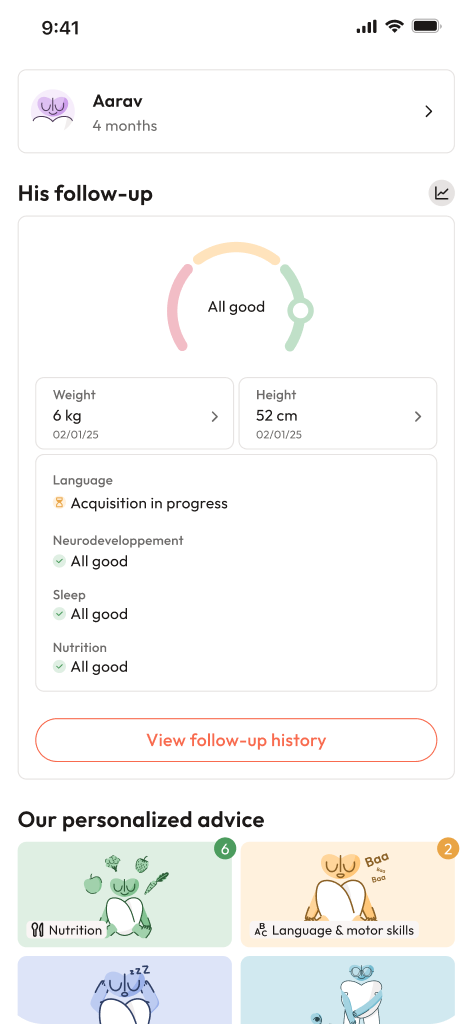Each pregnancy unfurls its own unique rhythm—sometimes calm, sometimes laced with suspense and questions that nudge at the mind late into the night. For many parents, one phrase echoes through appointments and reports: fetal growth percentile. What does it truly capture about your baby’s journey in the womb? Is it a verdict or just a signpost along the way? If you’ve ever found yourself poring over a scan report, wondering whether numbers like “12th percentile” or “90th percentile” spell relief or worry, you’re not alone. Understanding the ebb and flow of these numbers—why they fluctuate, how clinicians interpret them, and what really matters—can help ease those anxious moments. Let’s step into a world where charts, numbers, and medical terms are unraveled and rebuilt for you, with empathy and clarity, allowing you to be an empowered, informed participant in your child’s earliest days.
Reading the fetal growth percentile: what those numbers really reflect
Picture a busy railway station. Babies, in all their diversity, are the different trains pulling in—some early, some right on time, others a little later but safe. The fetal growth percentile situates your baby on a chart, not as a label, but as a marker compared to a large population of babies at the same gestational age. What does the “percentile” actually denote? Let’s break the numbers:
- 50th percentile: Half of babies are smaller, half are bigger—this is the “middle track”.
- 10th percentile: 9 out of 10 babies are bigger, but a single value here isn’t a diagnosis.
- 90th percentile: Your little one is larger than most peers for that specific week.
These figures are built from scientific measures—often the estimated fetal weight (EFW) or sometimes a specific circumference (like abdominal or head measurements). Clinicians also refer to distributions or “growth curves”. Think of these as train timetables, but for baby growth instead of departures.
Does a low percentile mean alarm bells? Not always. A one-off dip might simply prompt a closer check-in. The “trajectory” over time—if your baby’s growth hops steadily between percentiles, or stays parked at one station—is much more telling than a solitary reading. It’s a conversation tool, a way for you and your doctors to speak the same language.
Complex terms pop up:
- Z-score: Instead of a percentile, this shows just how “far” a measure is from average, measured in “standard deviations”.
- AC (Abdominal Circumference): Sensitive to nutrition, affects EFW a lot.
- Growth velocity: How fast the percentiles are shifting week to week.
Is staying inside the 10th–90th percentile range somehow better? Most babies here do very well, but remember: even a consistently low or high number is manageable with thoughtful guidance.
How is fetal size measured and turned into a percentile?
Behind the scenes: ultrasound biometry and conversion formulas
You probably remember the slightly cold gel and the wand gliding over your belly, capturing blurry images that become surprisingly precise numbers. These numbers—biparietal diameter (BPD), head circumference (HC), abdominal circumference (AC), femur length (FL)—are the raw ingredients.
- Abdomen: Tells about nutrient stores and overall fetal reserves.
- Head: Mirrors brain growth.
- Femur: Reflects bones and skeletal progress.
But these are only meaningful if matched to the right gestational age. Early scans, using crown–rump length (CRL), provide the “start date” for your baby’s calendar. If this dating is off, everything downstream can look skewed—even if your baby is thriving.
Numbers from your scan are plugged into well-established calculations like the Hadlock formula (modern obstetrics’ “calculator”) or sometimes the older Shepard formula. Do you see only the AC percentile on your report? Some clinics focus more closely on this, especially when fetal position makes full weight estimates tricky.
One surprise for parents: error margins (often 10–15%) are practically built into late-pregnancy estimates. Technical reasons abound—baby’s position, image sharpness, even the skill of the sonographer.
From data to growth chart: which percentile, exactly?
Transformation time: the EFW or measurement is matched to a reference chart:
- Hadlock: Still widespread, rooted in North American data.
- INTERGROWTH-21st: Globalized standard, fine-tuned for international populations.
- WHO: Yes, the World Health Organization has also crafted charts.
- Customized local/population-based curves: Some clinics adjust for typical heights, maternal weight, even fetal sex.
Check which chart your clinic prefers—it affects the final percentile. Consistency helps spot real changes, not just calculation quirks.
Ultrasound: best practices and potential pitfalls
Get this: even the best equipment, in the most expert hands, can trip on fetal yoga poses, squirming, or a stray thumb over the abdomen. Many clinics repeat and average values, especially when measures seem unusually high or low. Ideally, follow-up scans happen on the same machine, by the same team—variance sneaks in otherwise.
Practical tips for parents:
- If scans jump in percentile, ask if the dating was checked and whether results were averaged.
- No early dating scan? Flag this to your provider, especially if SGA or LGA is being considered.
Growth patterns and interpretation: beyond a single percentile
Evolutions through trimesters
- 1st trimester: Best window for accurate dating. Early smallness is almost always about timeline, not nutrition.
- 2nd trimester: Time to establish a baseline.
- 3rd trimester: Spotlight shifts to trends and wellbeing. Doppler vessel checks often enter the story.
Thresholds, categories, and practical meaning
- Under 3rd percentile: Calls for extra attention, possible underlying issues.
- 3rd–10th percentile: Could be genetics or a nutrition tweak—surveillance increases.
- 10th–90th percentile: Considered within standard range.
- 90th–97th percentile: May cue a review for gestational diabetes.
- Above 97th percentile: Raises discussion on delivery planning; macrosomia comes into focus.
What about “static” percentiles (a single reading) versus “growth velocity” (change over time)? Imagine a train parked at platform 5 (low percentile) but never moving—that can be less worrisome than a train speeding down increasingly lower tracks.
Discordant numbers: when measurements clash
Scenario: abdominal circumference dips but head stays on track. Possible explanations range from normal family patterns to specific placental quirks. Parental size, fetal sex, and other characteristics all feed into the big picture.
Making sense of the fetal growth curve
It’s easy to feel lost among lines and dots. Here’s how to decode your chart:
- Horizontal axis: Weeks of pregnancy.
- Vertical axis: The number being measured—grams for EFW or millimeters for, say, head circumference.
- Lines: The “railway tracks” of percentiles.
Sampling Hadlock EFW values:
- 24 weeks: 10th ≈ 576 g, 50th ≈ 665 g, 90th ≈ 765 g
- 28 weeks: 10th ≈ 1026 g, 50th ≈ 1189 g, 90th ≈ 1368 g
- 32 weeks: 10th ≈ 1635 g, 50th ≈ 1901 g, 90th ≈ 2187 g
- 36 weeks: 10th ≈ 2352 g, 50th ≈ 2745 g, 90th ≈ 3153 g
- 40 weeks: 10th ≈ 3084 g, 50th ≈ 3617 g, 90th ≈ 4135 g
Remember the built-in error—these values are beacons, not blueprints.
Real-world scenarios: three case sketches
- 28 weeks, EFW 1050 g (~12th percentile): Close monitoring and a follow-up in 2–4 weeks will help clarify the trend. If the percentile drops, clinicians may add Doppler checks.
- 32 weeks, EFW 2100 g (~85th percentile): Growth is strong; a check for gestational diabetes ensures it stays safe.
- 38 weeks, EFW 4000 g (above 90th percentile): Possible macrosomia. This may mean reviewing delivery planning, especially if glucose is not controlled.
SGA and LGA: what do these mean for your baby?
- SGA (Small for Gestational Age): EFW below the 10th percentile. Linked sometimes to placenta issues, hypertension, genetic traits, or nutrition.
- LGA (Large for Gestational Age): EFW above the 90th percentile. Often associated with gestational diabetes or parental size.
Possible risks:
- SGA babies might need additional warmth and glucose checks after birth.
- LGA babies, especially with maternal diabetes, may require careful delivery planning and postnatal blood sugar monitoring.
Extra tests—serial ultrasounds, Doppler studies, and maternal assessments—guide decisions. Sometimes hospitalisation is advised if baby’s distress or abnormal blood flows appear.
What impacts the fetal growth percentile?
Many elements intertwine:
- Maternal height and weight
- Health conditions: diabetes, hypertension, infections
- Lifestyle: nutrition, smoking, physical activity
- Technical factors: dating accuracy, ultrasound machine quality
- Genetic and family patterns
Growth isn’t just biology, it’s interplay—your baby’s unique mix of circumstances and influences.
When to consider a change in the delivery plan
Doctors evaluate the whole “puzzle”—percentile, Doppler results, mother’s health, history, and current symptoms. For example, very low Doppler flow, repeated low percentile readings, or very high weight with uncontrolled diabetes may lead to induction or caesarean planning—with each step taken after discussion and with full information.
Birth, newborn care, and the aftermath
- Low percentile: Close surveillance in labour, with the neonatal team primed if birth needs to be brought forward.
- High percentile: Earlier or planned birth may be suggested if maternal diabetes is present.
- In-labour risks: SGA—higher chance of intolerance to labour; LGA—higher risk of difficult deliveries and postpartum bleeding.
- After delivery: Both groups are observed carefully, with newborn support ready if needed.
Supporting healthier fetal growth: practical steps for parents
- For SGA-suspected cases: Focus on well-balanced nutrition, correct deficiencies, and eliminate smoking or excessive alcohol if present.
- For LGA with maternal diabetes: Blood glucose control and, if needed, medication.
- Maintain activity with safe exercises as agreed with your health provider.
- Stay organised: record exam dates, chart type (Hadlock, INTERGROWTH-21st, WHO), and bring each report to appointments.
Red flags that warrant urgent contact:
- Sudden loss of fetal movements
- Amniotic fluid leakage or significant bleeding
- Severe persistent pain or high fever
Whenever uncertainty arises, contacting your maternity provider or hospital is always a wise step.
Useful tools and resources
Always ask for detailed reports: raw values (BPD, HC, AC, FL), EFW, percentile, reference chart, date, and operator. If you want extra confidence, there are validated online calculators using Hadlock or INTERGROWTH-21st models. However, never hesitate to bring your printout to your doctor—they will put the numbers into context.
Key Takeaways
- Fetal growth percentile is a reference point, not a judgment, showing where your baby stands compared to many others for the same gestational age.
- EFW is derived from ultrasound biometry and established formulas; the error range is real, usually around 10–15%.
- Watch for trends rather than fixating on individual percentiles—consistent follow-up, not panic at one result, is what truly matters.
- SGA and LGA are not destinies—they’re signals for tailored checks, Dopplers, and extra planning.
- Lifestyle, health status, and technical elements all shape percentile shifts.
- For further clarity and personal support, connect with professionals or use resources like the Heloa app for free children’s health questionnaires.
Questions Parents Ask
How do I use an online fetal growth percentile calculator?
Online calculators take your baby’s estimated fetal weight (EFW)—or sometimes individual measurements like BPD, HC, AC, FL—and ask for the gestational age to produce a fetal growth percentile. Always cross-check which reference chart (e.g., Hadlock, INTERGROWTH, WHO) the tool uses. Enter your numbers directly from the report, use the same reference over multiple scans when possible, and keep note of the reported margin of error. Bringing your results to your clinician for a detailed walkthrough is always a smart move—interpretation in the real-life context makes all the difference.
What is the NICHD fetal growth calculator and how is it different from other charts?
The NICHD fetal growth calculator was built using U.S. population data and considers differences seen in those specific cohorts. INTERGROWTH-21st provides an international comparison, while Hadlock uses historical reference points. Depending on which chart your measurements are mapped onto, the fetal growth percentile might vary. What matters most is sticking to the same chart for consistency and discussing results with your full pregnancy context in mind.
Can I trust online calculators—are their percentiles reliable?
Online tools effectively translate data points into a fetal growth percentile, but their accuracy depends on the inputs and the chart being referenced. Ultrasound itself comes with a normal margin of error, and discrepancies between charts (Hadlock vs. INTERGROWTH, for instance) are normal. Calculator results should be treated as a tool for communication, not as a final diagnosis. Context, clinical interpretation, and trend over time always give the most accurate guidance. If in doubt, always consult with your healthcare provider for a complete picture.

Further reading :









